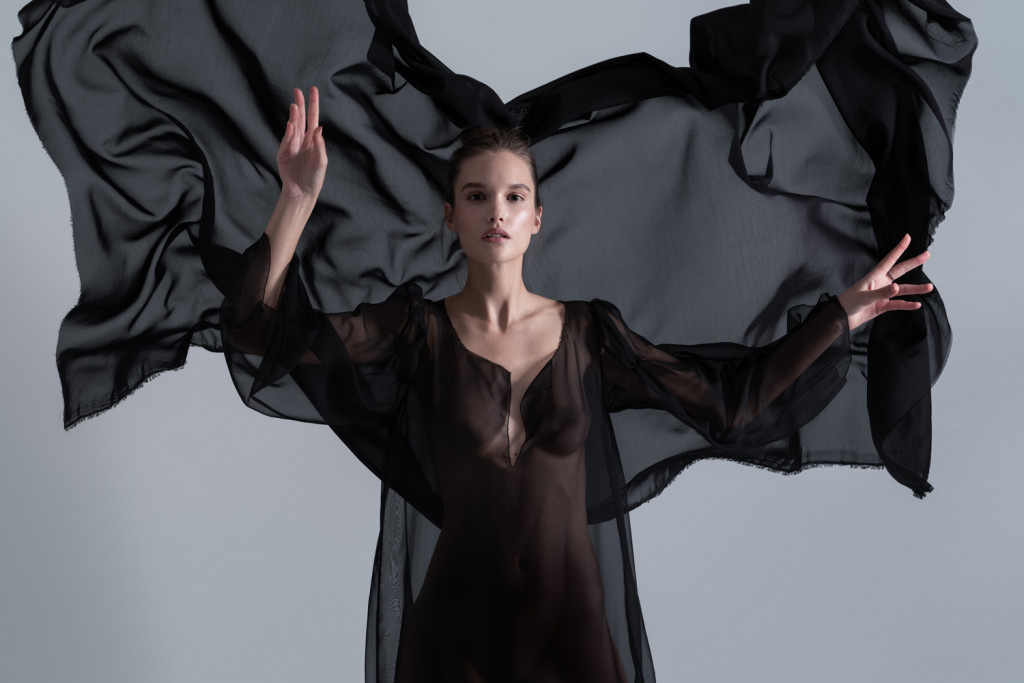
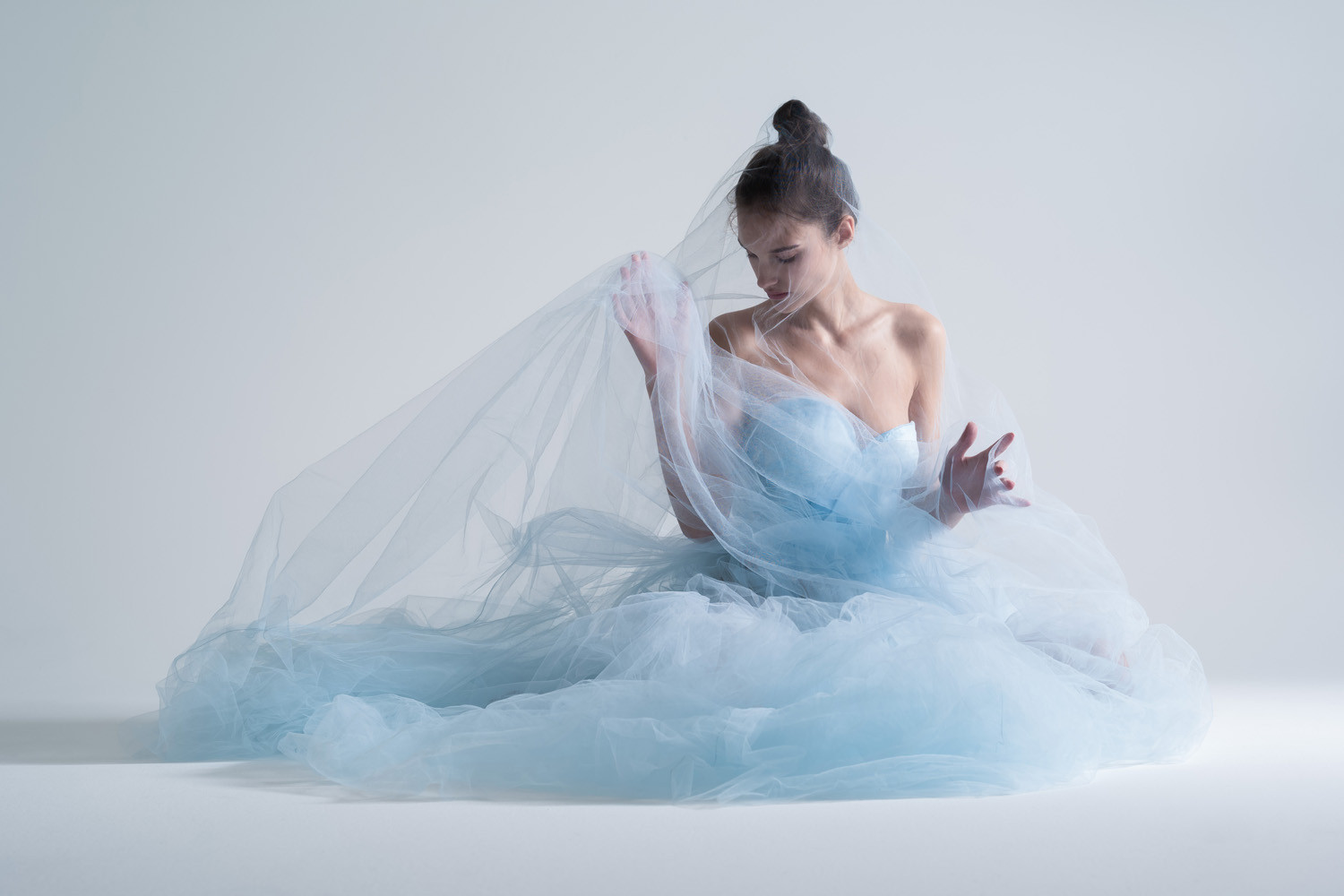

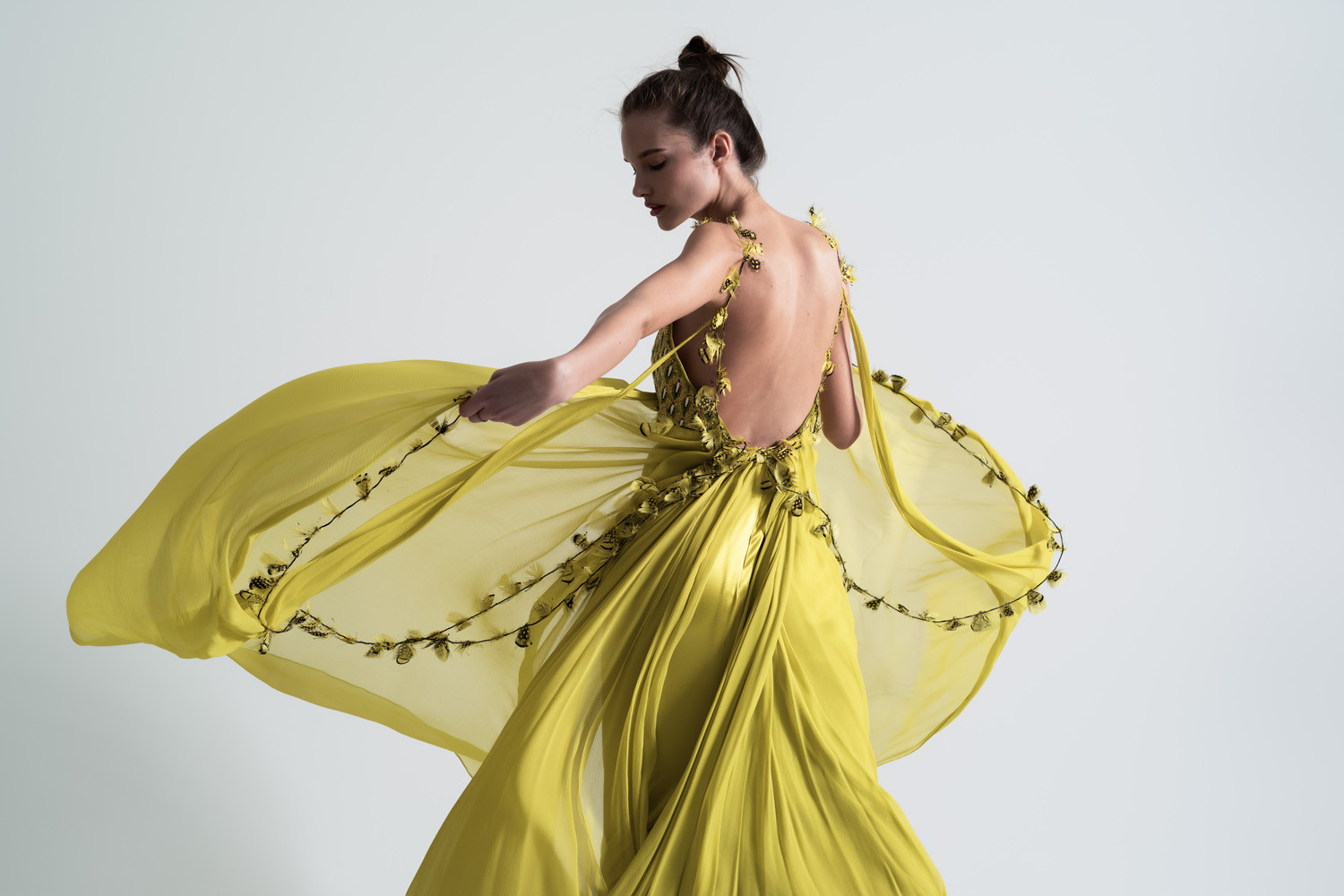
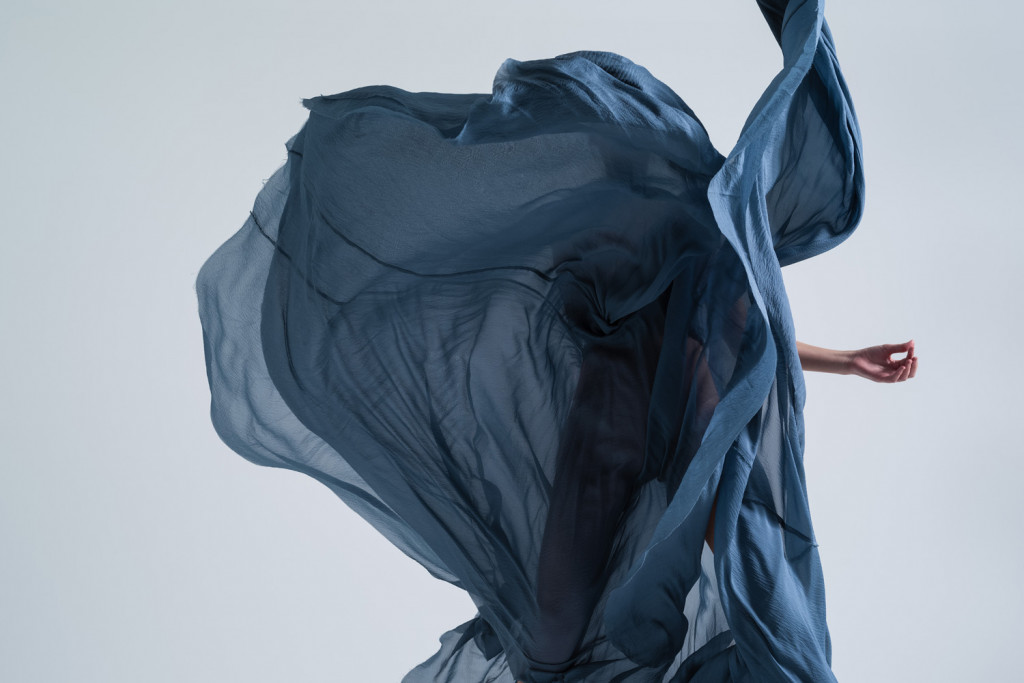
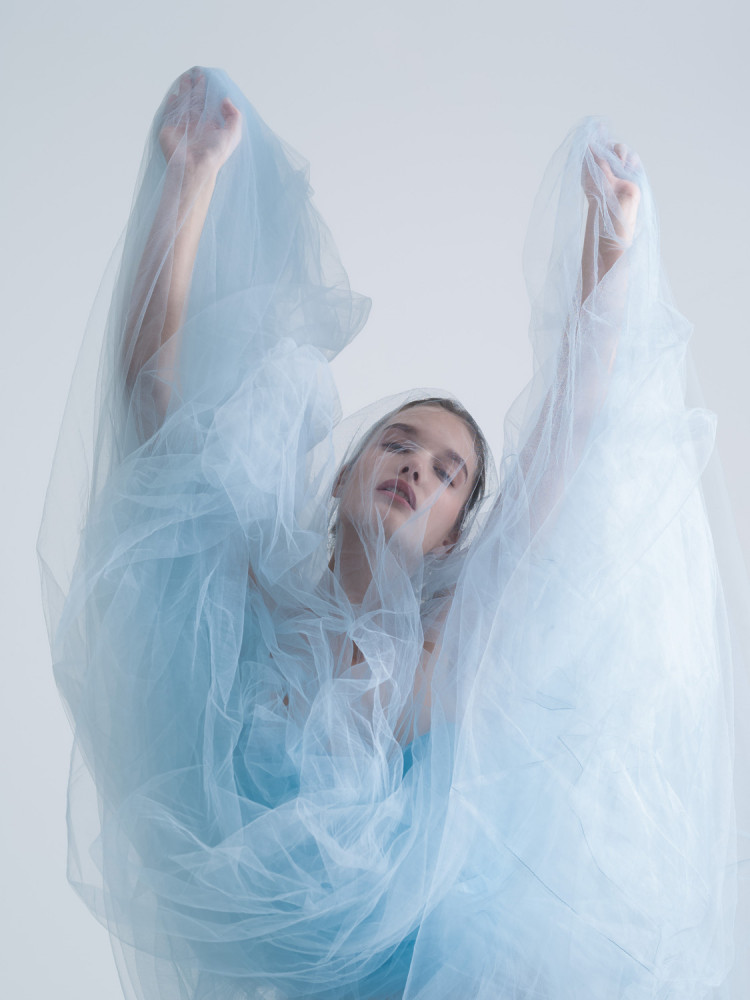
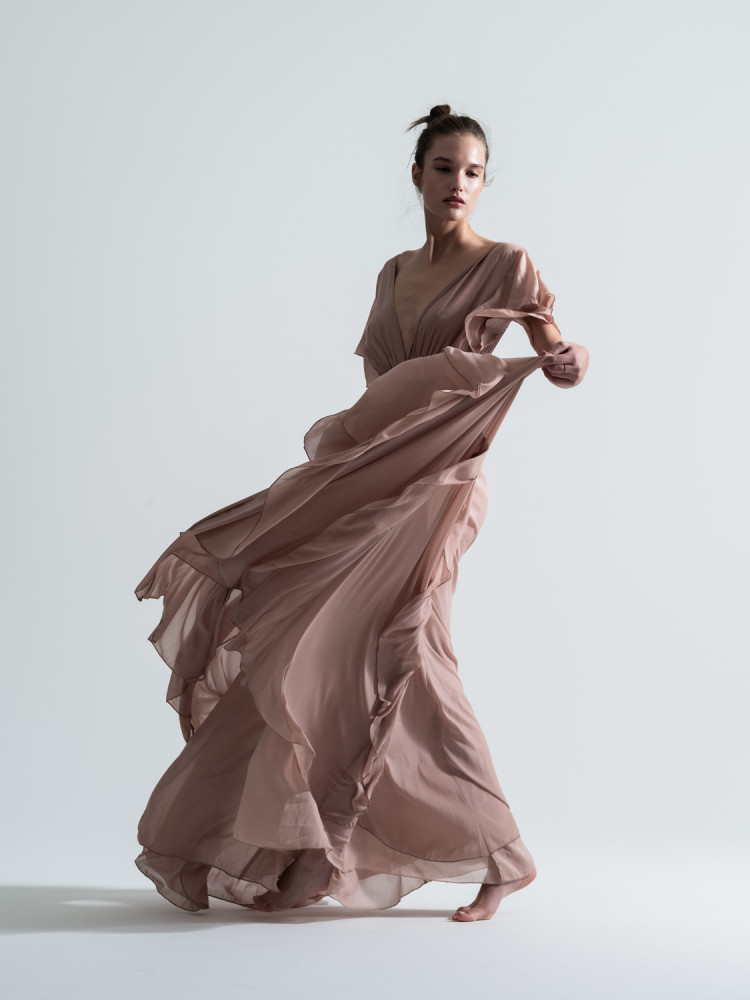
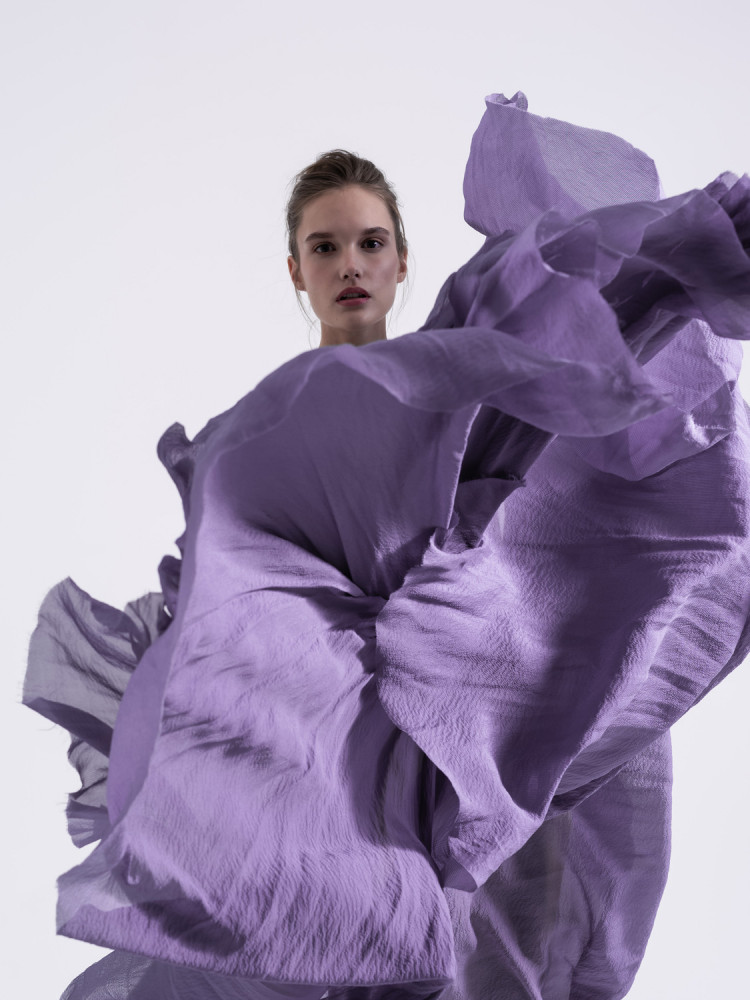
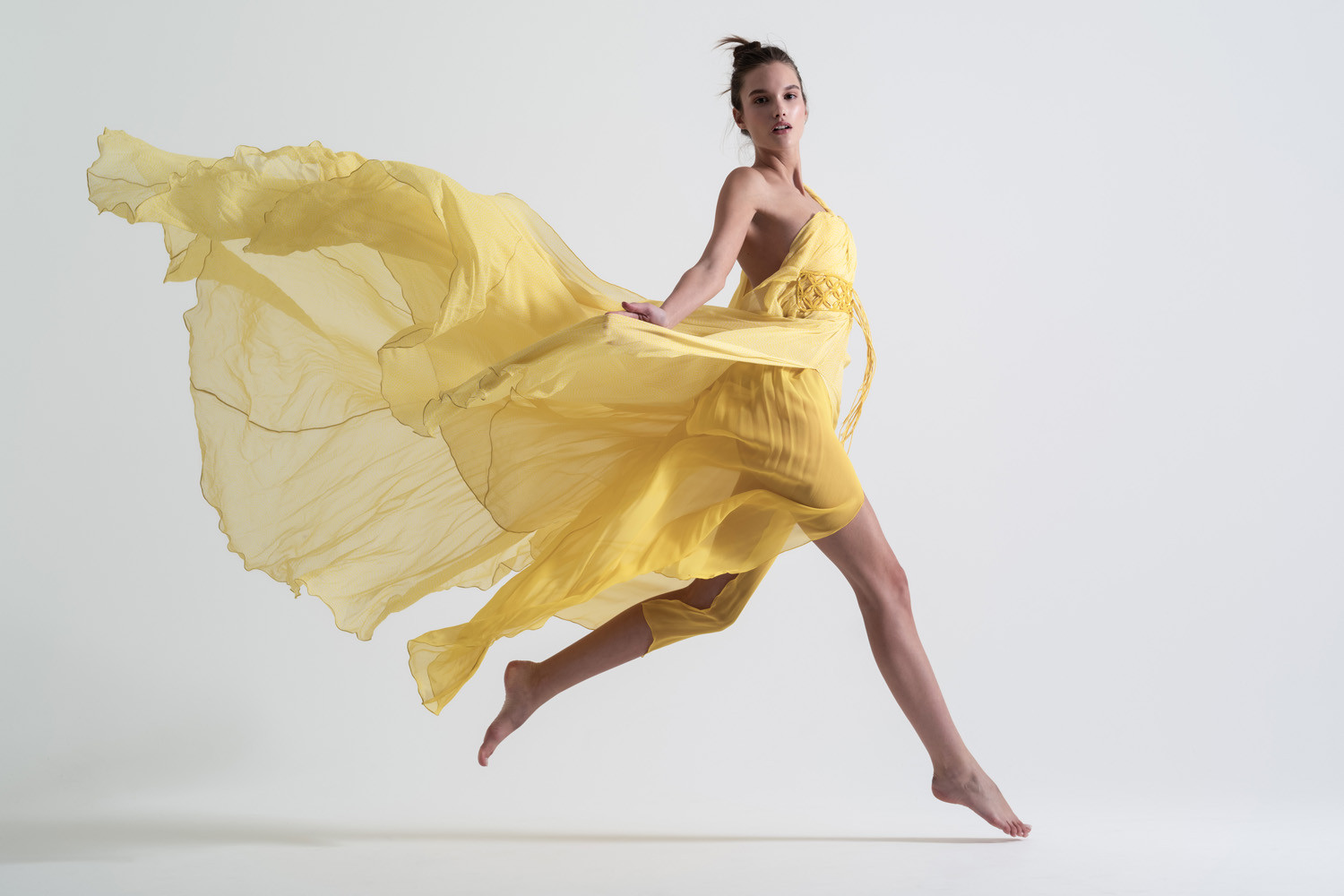
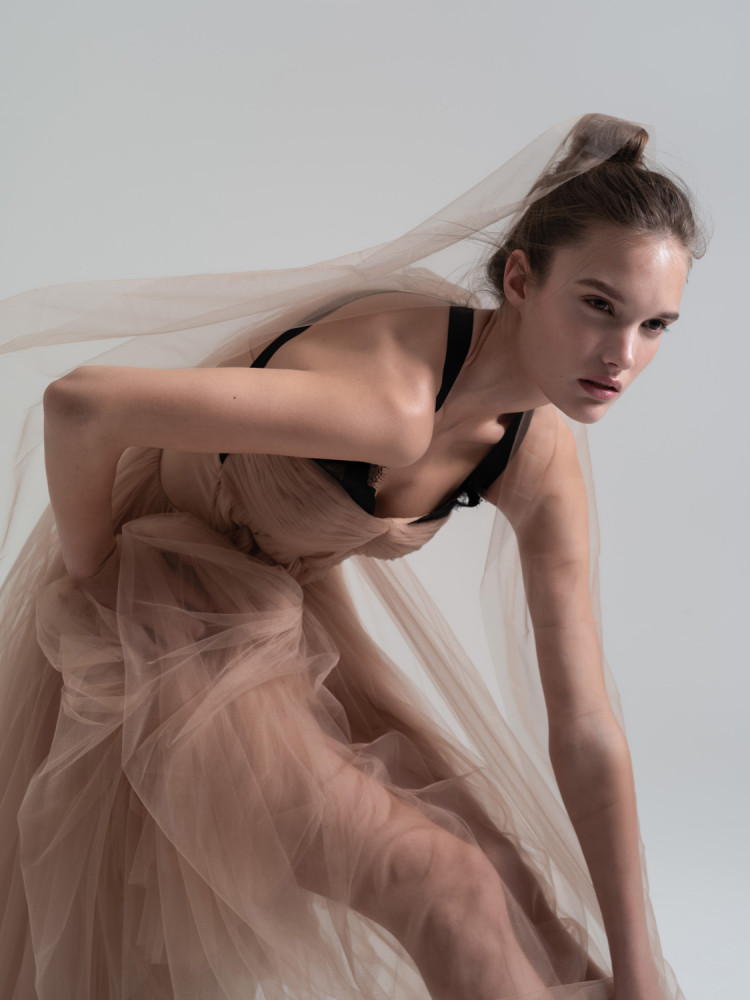
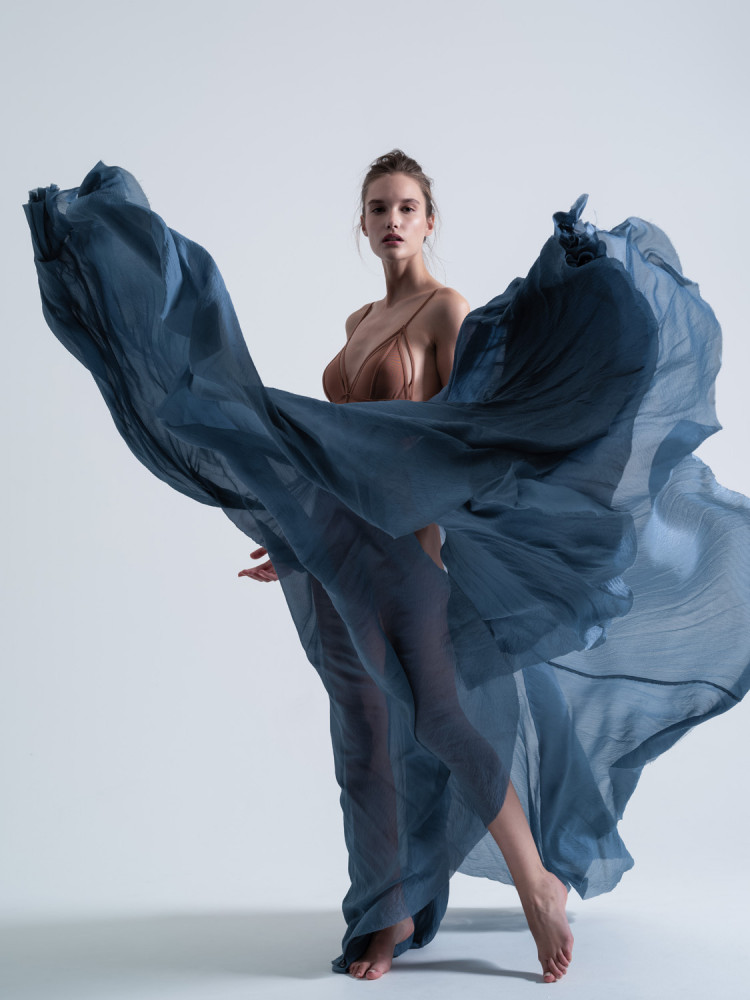
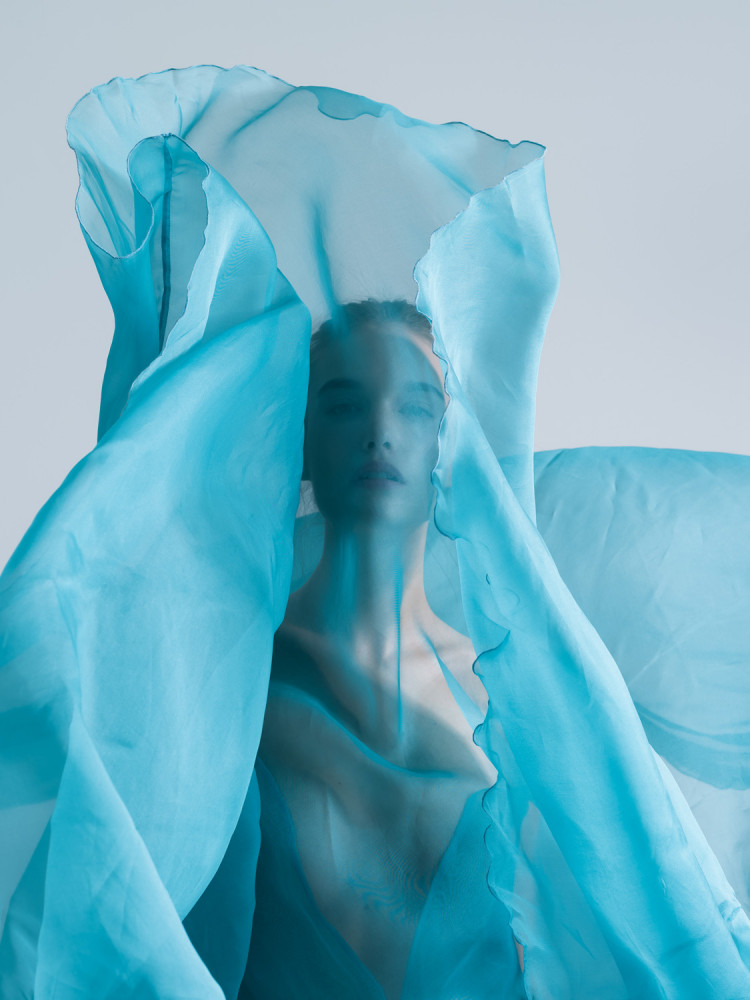
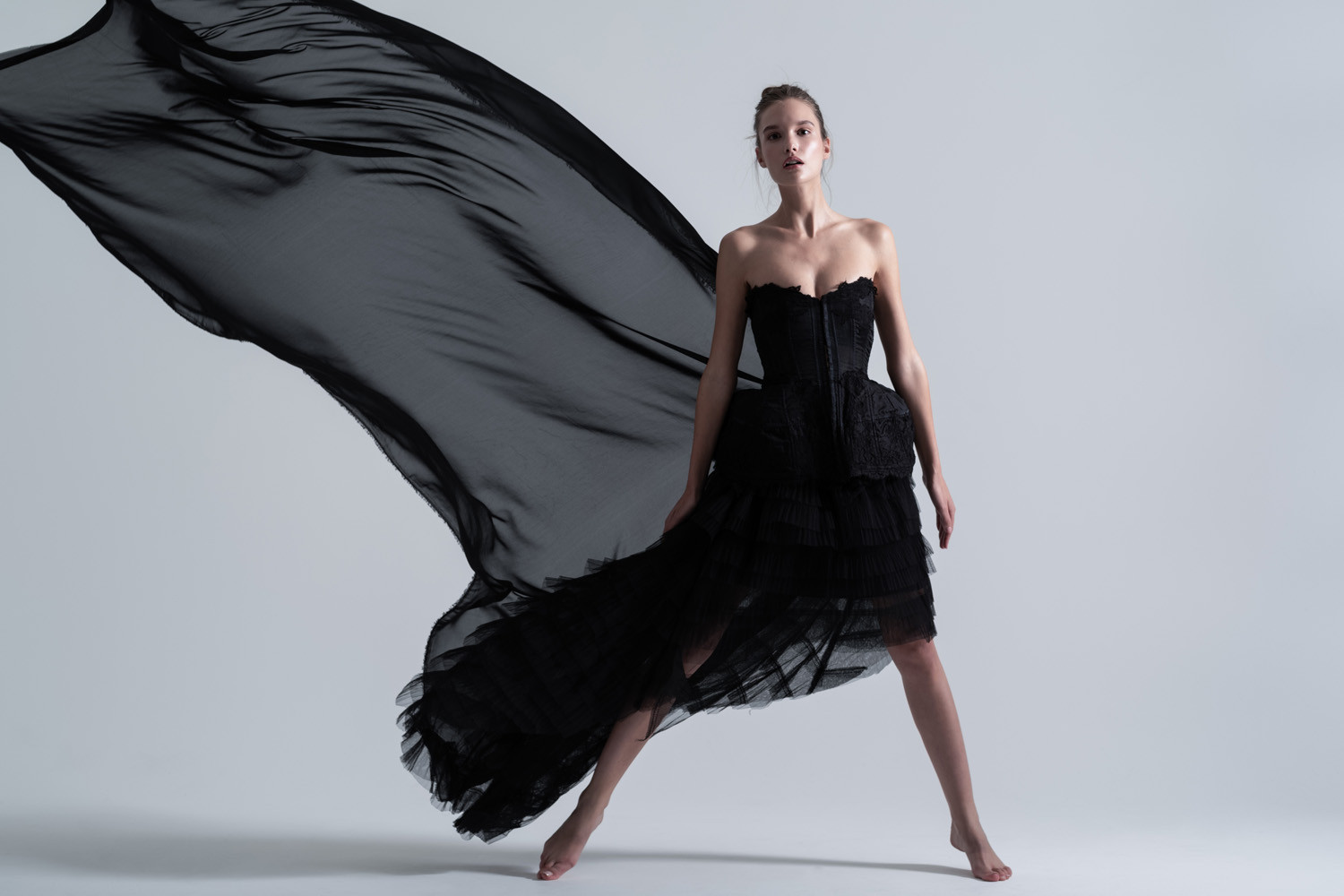
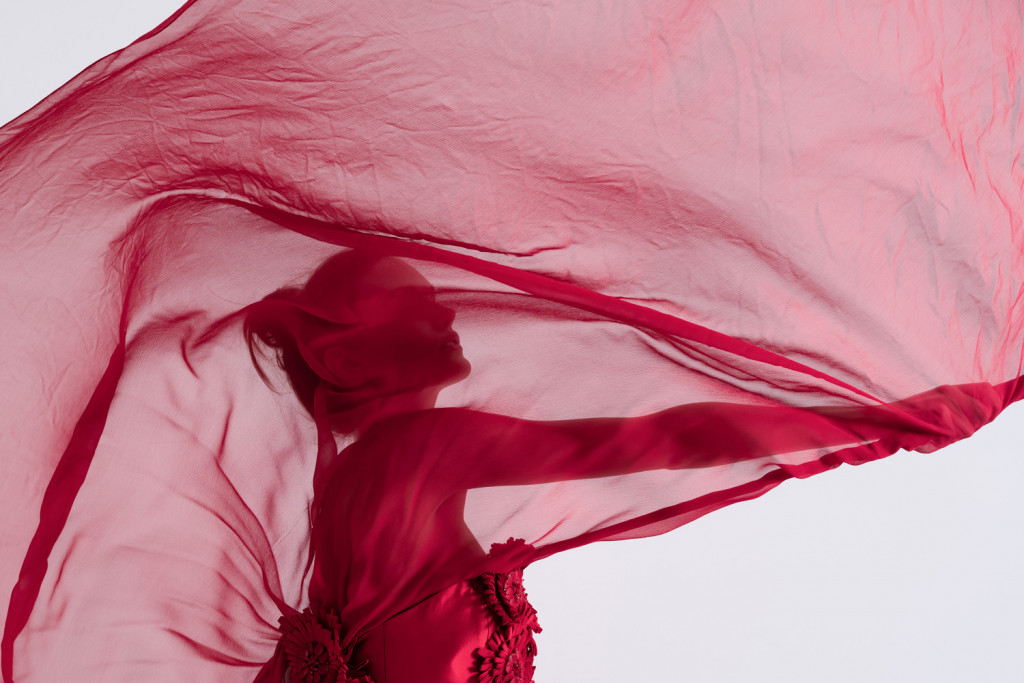














INTERVIEW
Jeff Mikkelson
Photographer/Director: Jeff Mikkelson Creative Director: Alex Delgado Director of Photography (Video): Jason Banker Digital Tech: Brian McDonald Fashion Stylist: Rod Novoa Hair Stylist: Li Murillo Makeup Artist: Aeriel d’Andrea Model: Kinga @ New York Models Camera: Leica S (Typ 007) with Summarit-S 70 f/2.5 ASPH. (CS)
A 19th-century short film by the Lumière Brothers was the inspiration behind Jeff Mikkelson’s independent project, ‘Serpentine’. In our interview, the New York based Beauty & Fashion photographer talks about his working process, how he manages to create a special on-set atmosphere, and his stance on retouching images.
S Magazine: What was your vision for this feature? How did it evolve?
Our initial inspiration for this project was a short film from the late 19th century by the Lumière Brothers capturing a dance made famous by the actress and early modern dancer Loie Fuller, called Serpentine Dance. The original film was shot in black and white, of course, but the dancer’s billowing dress was coloured in by hand, frame-by-frame, in shifting hues—an early special effect that gave it a surreal, dreamlike quality. Using that as a point of departure, the creative director Alex Delgado mixed simple concepts of motion, fluidity and colour into a mood board that combined classic and modern dance motifs with contemporary fashion and composition. The rest of the creative team built on the concept wonderfully—the fashion stylist Rod Novoa is especially good at pulling exquisite pieces that move well, creating fluid, organic forms, which our DP for the video, Jason Banker, captured beautifully.
Why did you choose to shoot this project in a studio?
We wanted a clean slate and simple lighting configuration to highlight the movement, colour and flow of the model and clothes for both video and stills. Also, capturing rapid movement without blur requires high-speed lights, and is easier to achieve in the studio.
What was the quality/mood you aimed to achieve?
Ethereal, abstract, organic, fluid, melodic, dreamy.
How did you choose the model?
From an early stage, Kinga was my favourite. For me, the choice of model is absolutely critical, especially when movement is involved, so I conducted an in-person audition. It’s surprisingly difficult to find a model who can move well, and all too often models without particular physical fluidity are cast as dancers in fashion—something that drives professional dancers crazy. Kinga is not a professional dancer but her movement quality is superb, and since I didn’t want the dance motif to be too literal, she worked out perfectly. It doesn’t hurt that she’s also gorgeous.
How do you create the right atmosphere when working on set?
More than one of my clients have called me the Zen photographer. I take that as an enormous compliment since I do actually meditate on a regular basis and study kung fu, but I also think it sets a tone for the day that others find relaxing, making it easier to focus on creating beauty. On set I’m usually listening to jazz, which also sets the mood since creative collaborations are a lot like playing in a jazz band—a combination of structure and improvisation.
What distinguishes this project from your commercial work?
Having creative freedom and control is always nice, as is being released from the brief of having to sell something. Occasionally, you also have that kind of freedom in an advertising context, but most often you only find it in editorial or personal work.
Tell us more about shooting with the Leica S and SL. Was it your first time? What was your experience?
This was my first time shooting with both the Leica S and the Leica SL, and I found both amazing. We used the S 007 medium format camera with 70mm and 120mm macro lenses for the stills, and the SL mirrorless camera with 24-90mm zoom for the video. The detail, affinity and dynamic range of the S is outstanding—something that’s hard to appreciate in a web image, but really stands out in high-resolution. It’s also nice to handle an object with such precision tooling. The SL has a softer quality that renders skin tones beautifully, and the zoom is probably the best I’ve ever used.
In your biog you say you want to show "that beauty and truth are lovers”. How do you feel about retouching, and how much of your time do you spend with post production?
Less and less. The industry has shifted away from heavy retouching and I welcome the change, since I’ve always striven for plausibility and natural texture in my post-production work. That said, I think the ‘raw’ aesthetic can also be a pretence, a delusion, or simply an excuse for sloppy work. The fact is, there’s no such thing as ‘straight photography’. Every image is an interpretation, and as soon as you put a frame around something, you’ve changed it – no matter how much or little you manipulate the image at a later stage. True art evokes something real, and that can be accomplished with both minimal work or painstaking labour.